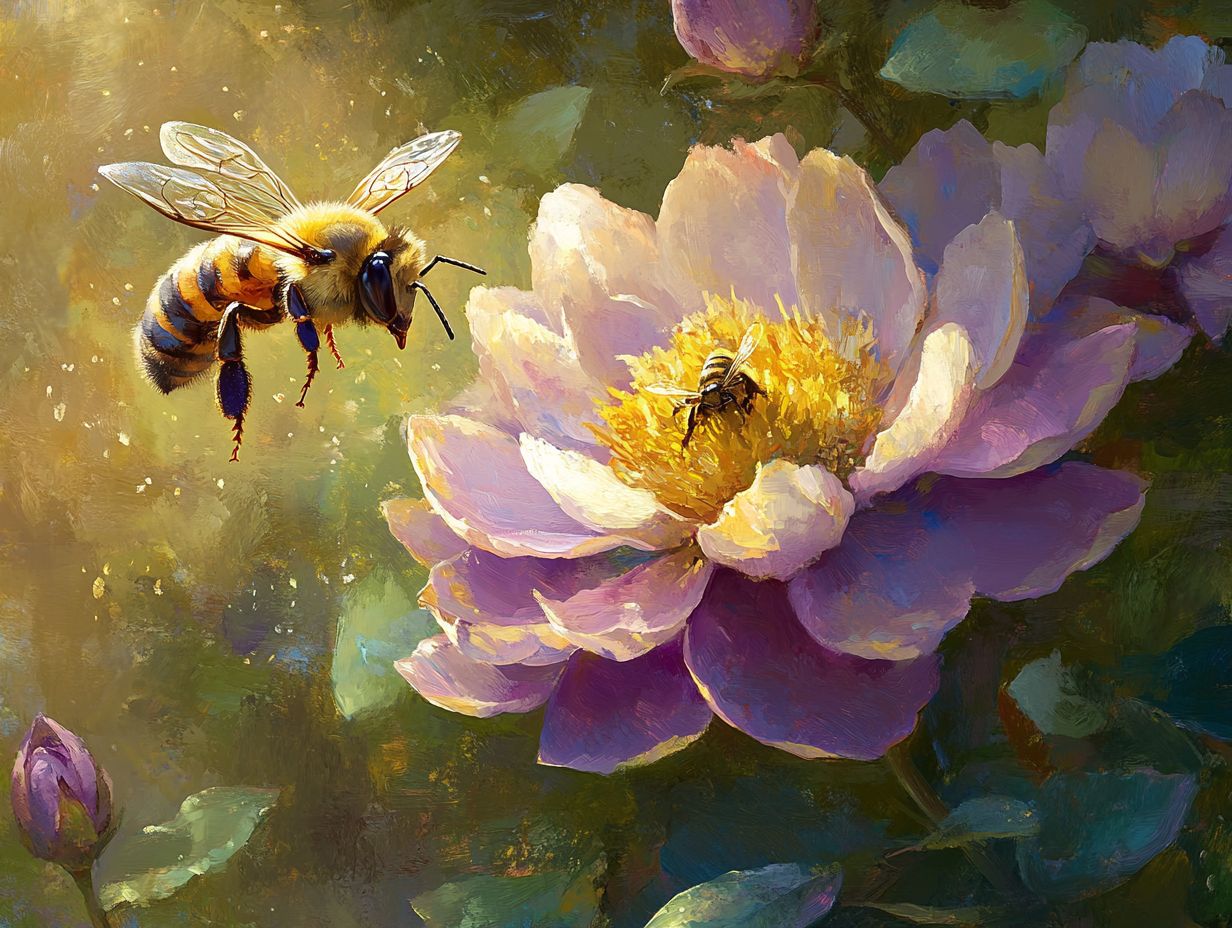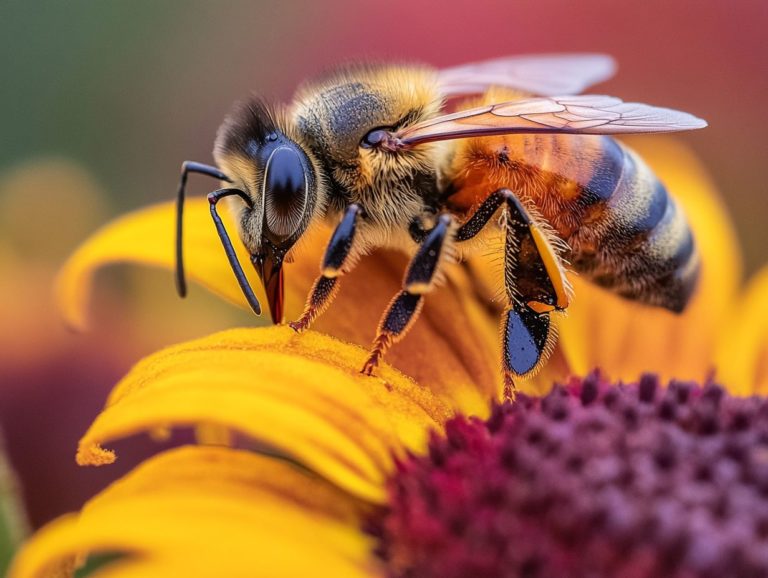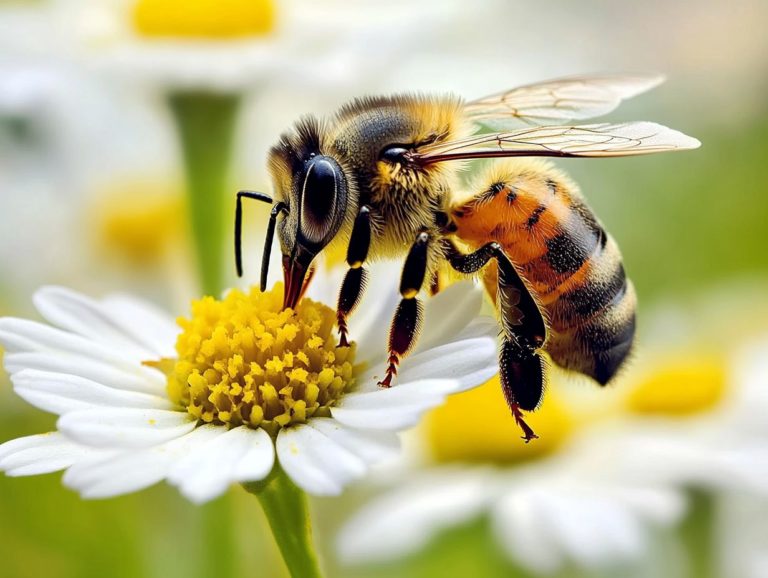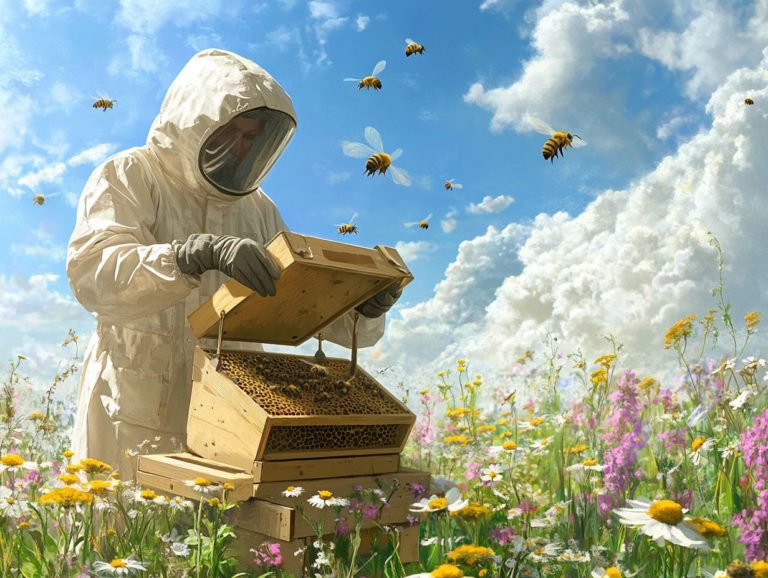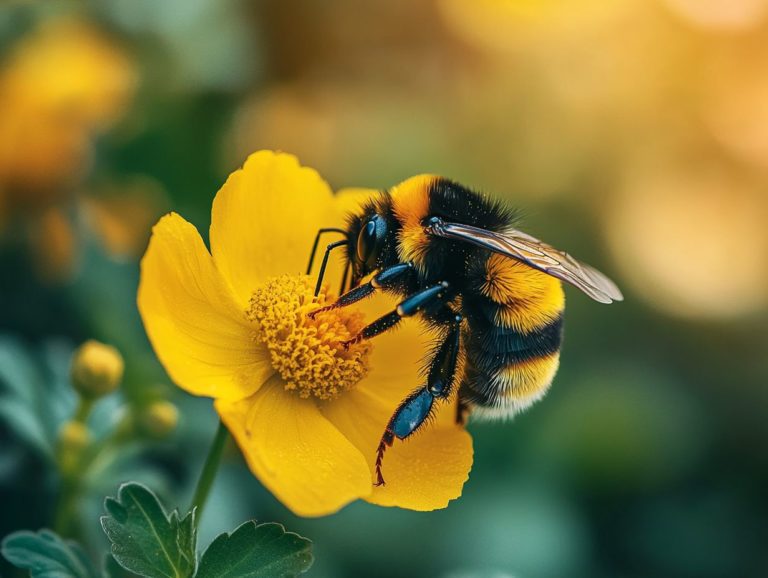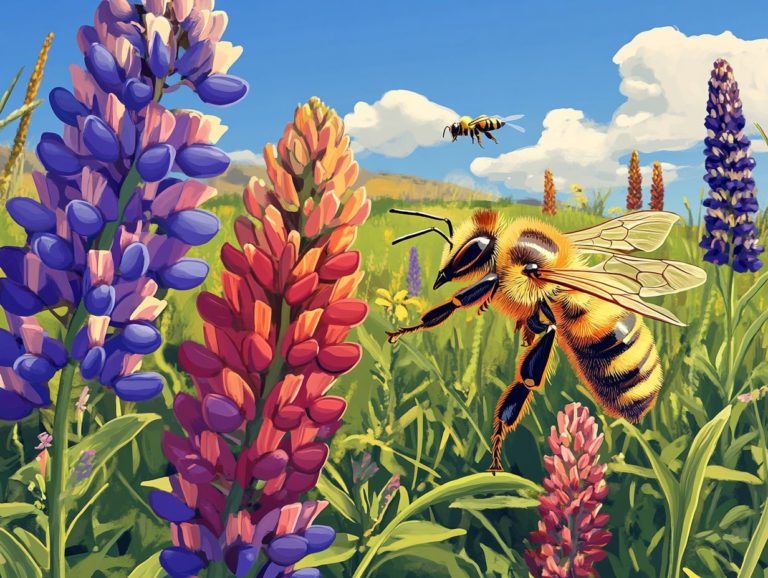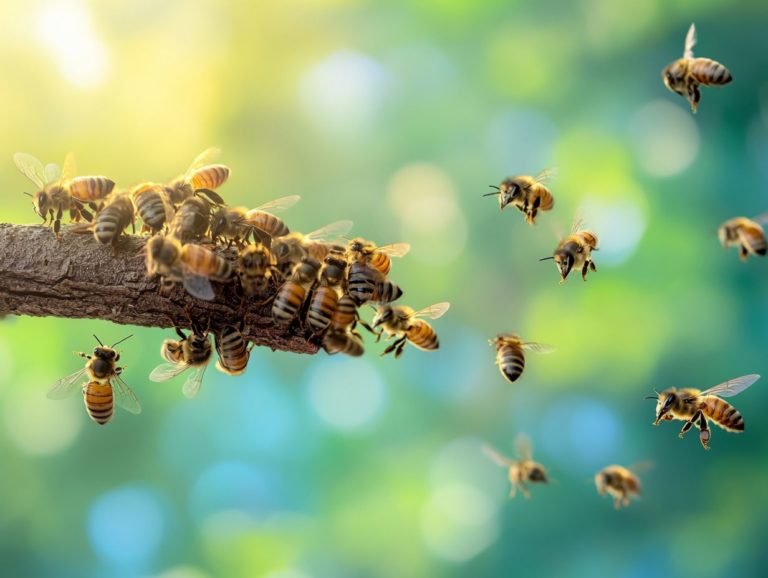The Relationship Between Bees and Flowers
Bees and flowers share a remarkable relationship that forms the backbone of our ecosystems. Bees are essential for flowers to reproduce and thrive! As vital pollinators, they play a crucial role in helping flowers reproduce, while flowers provide the nourishment bees need to thrive. This intricate dance of cooperation goes beyond mere survival; it involves a fascinating interplay of communication and attraction.
You will uncover how bees assist in the pollination process, what they gain from flowers, and the various relationships that flourish between these two essential components of nature.
Additionally, you will delve into the threats they face and explore meaningful ways to protect their coexistence. By understanding the inseparable bond between bees and flowers, you ll gain insight into why they are such vital partners in the natural world.
Contents
- Key Takeaways:
- Why Are Bees Important for Flowers?
- Why Are Flowers Important for Bees?
- How Do Bees and Flowers Communicate?
- What Are the Different Types of Relationships Between Bees and Flowers?
- What Happens When Bees and Flowers Cannot Coexist?
- Frequently Asked Questions
- What is the relationship between bees and flowers?
- Why are bees important for flowers?
- How do bees choose which flowers to visit?
- Do all bees visit the same types of flowers?
- What happens if there are not enough bees to pollinate flowers?
- Are there any other benefits of the relationship between bees and flowers?
Key Takeaways:
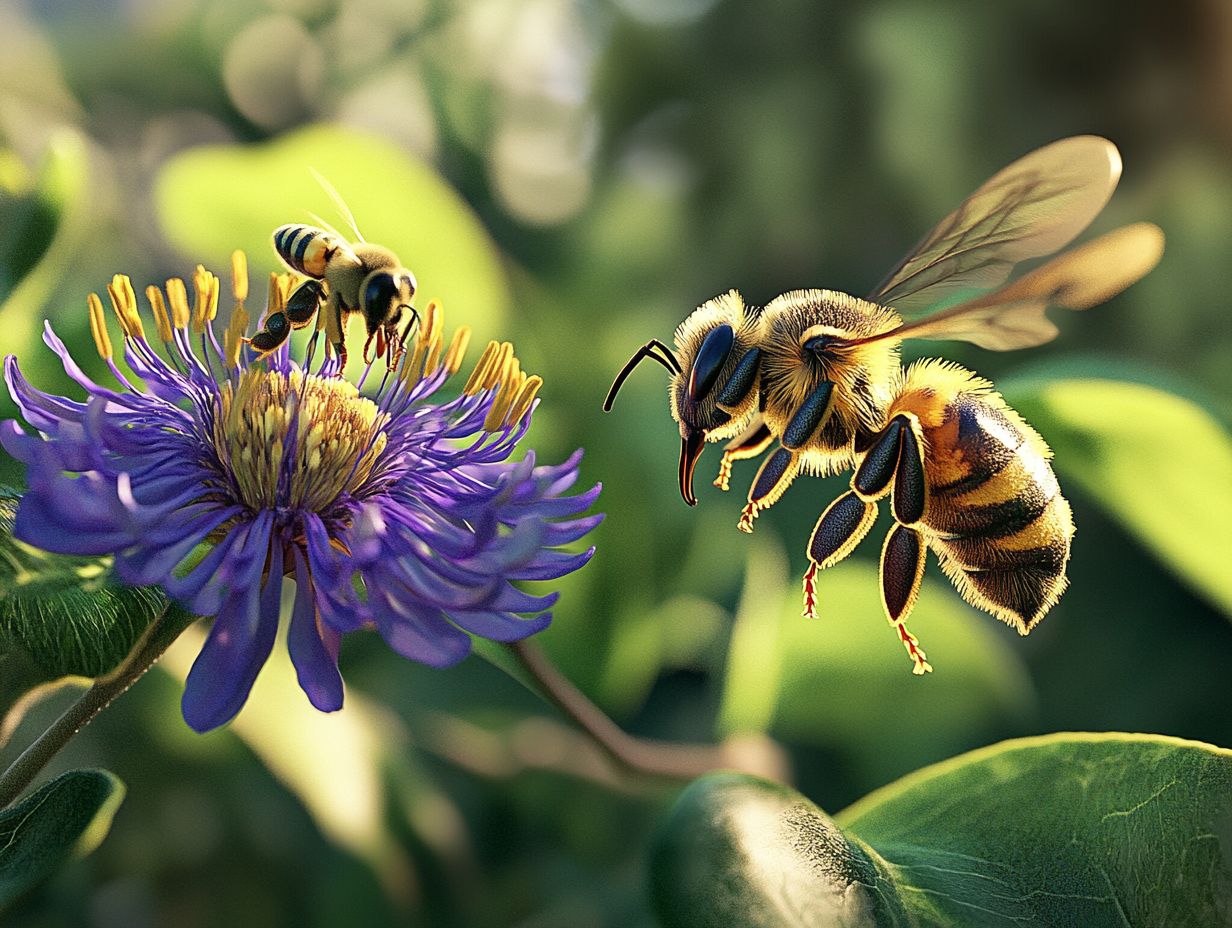
Bees play an essential role in pollinating flowers, ensuring their reproduction and survival.
Flowers provide bees with food and nutrients, such as nectar and pollen, that are vital for their survival and overall health.
The communication and relationship between bees and flowers involves complex interactions, such as bees finding flowers through visual and olfactory cues, and flowers attracting bees through color, scent, and shape.
Why Are Bees Important for Flowers?
Bees hold a vital position in the reproductive cycles of flowering plants, playing a critical role in pollination through their interactions with flowers. This dynamic partnership not only supports vibrant ecosystems but also maintains biodiversity.
By facilitating these crucial interactions, bees enhance food production, benefiting not just the specific plant species involved but the broader ecosystems that depend on them.
As essential pollinators, they contribute significantly to the growth of fruits and vegetables staples in your diet that are critical for food security.
With ongoing challenges such as climate change and habitat loss threatening bee populations, understanding their importance is essential for driving effective conservation efforts.
How Do Bees Help in Pollination?
Bees play a vital role in pollination by transferring pollen from the male anthers of flowers to the female stigma, a crucial step in the reproductive cycles of flowering plants.
Your journey into the world of pollination begins when a bee visits a flower in search of nectar, that delightful sugary liquid that fuels their energy needs. As they flit among the vibrant blossoms, their furry bodies gather pollen grains, which they unintentionally carry to other flowers they explore. This process of cross-pollination not only enhances genetic diversity but also leads to the development of healthier plant populations.
Different species of bees employ various pollination strategies. For example, bumblebees utilize a technique known as buzz pollination, where they vibrate flowers to effectively release pollen an essential method for crops like tomatoes and blueberries.
On the other hand, solitary bees often have a preference for specific flowers, such as mason bees with cherry blossoms, ensuring these plants successfully reproduce, thrive, and continue to adorn our environment with their beauty.
Why Are Flowers Important for Bees?
Flowers play a crucial role in the lives of bees, offering essential resources such as nectar and pollen that are critical for their survival and reproduction. Nectar acts as a primary energy source, while pollen supplies the vital proteins and nutrients necessary for the growth and development of bee colonies.
In the absence of flowering plants, bees would face significant challenges in sustaining their populations. This would, in turn, have detrimental effects on ecosystems and food production.
The diverse habitats created by flowers are essential for the overall health of various bee species, promoting biodiversity and ensuring that life continues to flourish.
Join efforts to protect bees and flowers in your community today!
What Do Bees Get from Flowers?
From flowers, bees gather both nectar and pollen, which are vital for their nourishment and honey production.
Nectar is an important source of energy that grants bees the strength they need for flight and daily tasks. Pollen, on the other hand, is a treasure trove of proteins, vitamins, and minerals essential for their growth and development.
This two-fold diet not only energizes the bees but also strengthens the health of the entire colony. It facilitates effective brood rearing and ensures the hive’s reproductive success.
The symbiotic relationship between bees and flowering plants highlights the critical role bees play in agriculture. Their pollination efforts lead to enhanced crop yields.
A decline in bee populations profoundly affects food production and emphasizes the necessity of maintaining robust bee colonies for sustainable agriculture and the well-being of the broader ecosystem.
How Do Bees and Flowers Communicate?
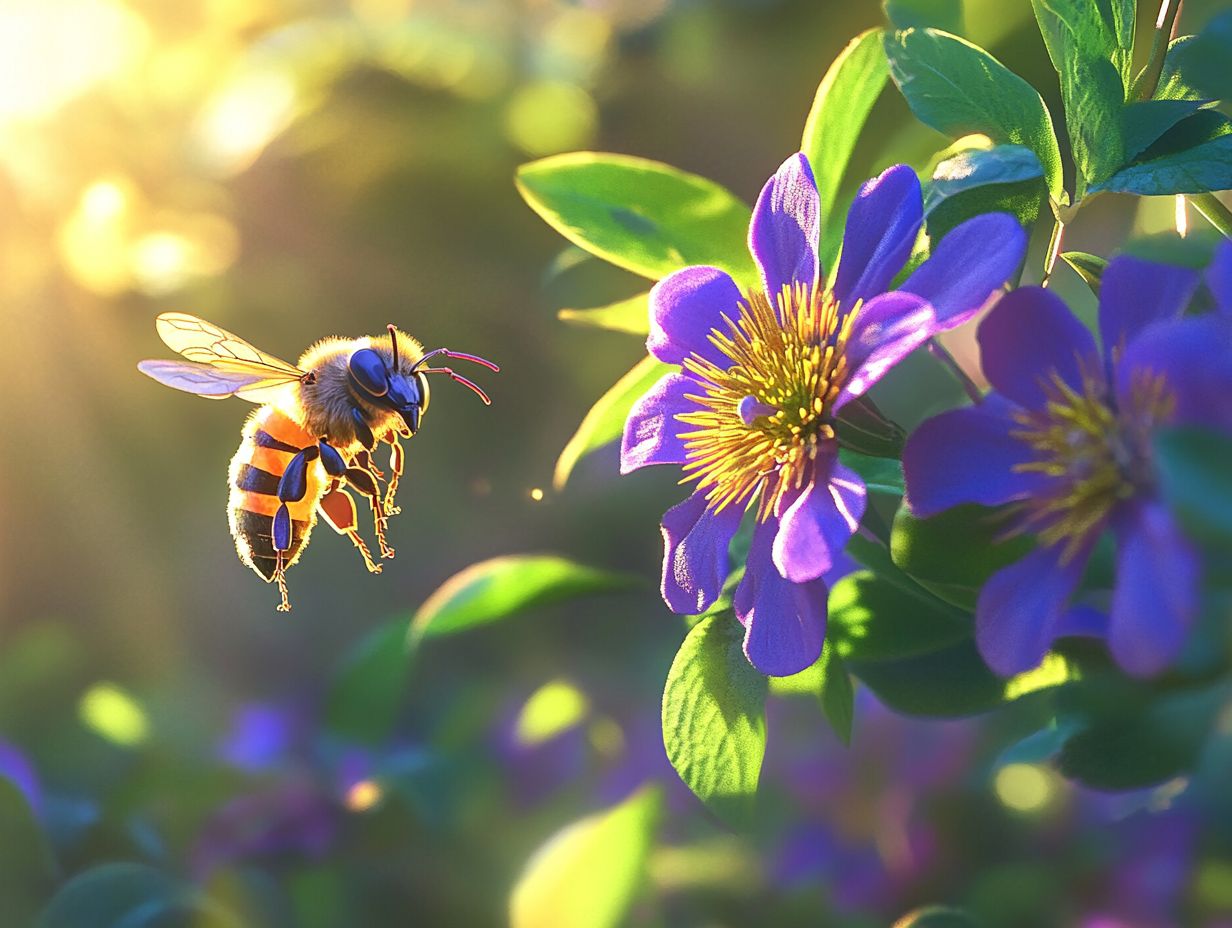
Bees and flowers engage in a remarkable form of communication that involves a rich tapestry of cues. They utilize visual signals, such as vibrant colors and unique shapes, alongside olfactory cues like enticing scents.
These elements beautifully attract pollinators to specific plant species, creating a perfectly orchestrated relationship in nature.
How Do Bees Find Flowers?
Bees use a fascinating blend of visual and olfactory cues to find flowers. They rely on their sharp eyesight to identify vibrant colors and their remarkable sense of smell to detect the sweet scents of blossoms.
These exceptional sensory abilities can differ significantly among bee species. Some prefer particular colors that resonate with their surroundings. For instance, native bees are often attracted to blue and violet hues that stand out against their local flora.
Environmental conditions such as sunlight, temperature, and humidity play a pivotal role in how effectively these pollinators perceive their cues. In shaded woodlands, certain species may rely more on scent when visibility decreases.
Understanding these sensory interactions underscores the ecological importance of each bee species within its habitat. It also highlights the delicate balance necessary to preserve biodiversity and maintain effective pollination services.
How Do Flowers Attract Bees?
Flowers employ various strategies to attract bees, utilizing vibrant colors, captivating shapes, and alluring scents that signal the availability of nectar and pollen.
These colorful blooms often display bright yellows, blues, and purples that boldly contrast against the green backdrop of foliage, making them particularly inviting to pollinators. The shapes of the petals are not merely decorative; they accommodate the physical traits of bees and provide easy access to nectar, facilitating the essential transfer of pollen.
Moreover, many flowers release sweet fragrances that waft through the air, drawing bees from afar with their enticing scents. This intricate design not only ensures that bees are effectively attracted but also reinforces their crucial role in the pollination process, which is vital for plant reproduction and the overall health of our ecosystems.
What Are the Different Types of Relationships Between Bees and Flowers?
The relationships between bees and flowers can be elegantly categorized into three primary types: mutualism, commensalism, and parasitism.
Mutualism is a relationship where both species benefit. Commensalism involves one species benefiting while the other is not significantly affected. Parasitism is where one species benefits at the expense of the other.
Each of these interactions plays a unique and vital role within ecosystems, shaping the intricate web of life.
To help protect these vital interactions, consider supporting bee conservation efforts! Every action counts in preserving our environment.
Mutualism
Mutualism represents a remarkable relationship where both bees and flowers thrive through their interactions. For instance, during pollination, bees obtain food while facilitating the reproduction of flowering plants.
This intricate partnership enhances biodiversity by promoting a variety of plant species and supporting food production systems essential for human survival. Many flowering plants, such as wildflowers and fruit-bearing crops, depend on specific bee species like honeybees and bumblebees for effective pollination. The decline of these bee populations threatens agricultural yields and the overall health of ecosystems.
In a flourishing mutualistic relationship, such as that between clover and its pollinators, the abundance of flowers provides rich forage for bees, while these pollinators enable the clover to reproduce. This dynamic nurtures diverse wildlife and promotes healthy soil.
Therefore, mutualism is crucial for sustaining both natural ecosystems and agricultural landscapes. How can you support this vital relationship in your garden?
Commensalism
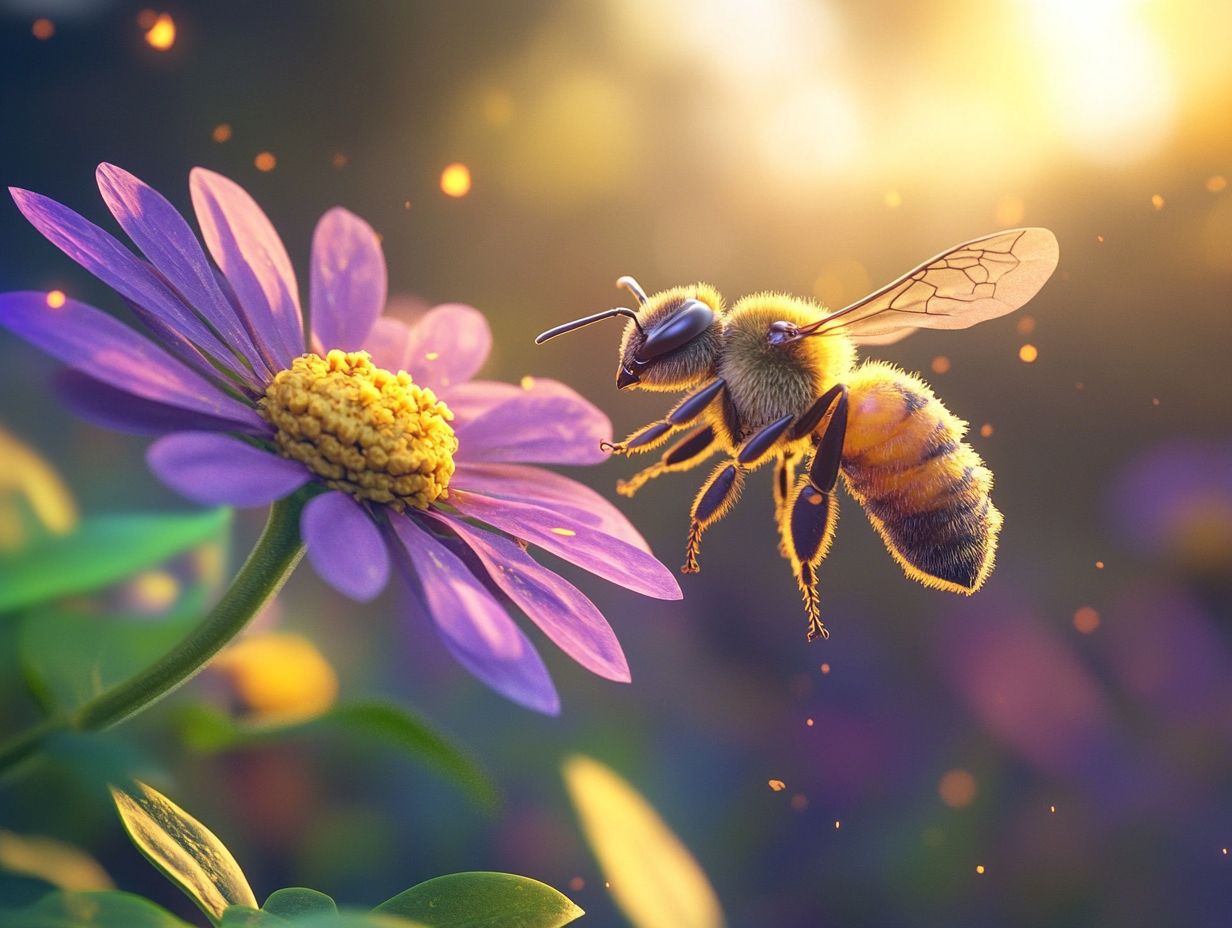
Commensalism describes a fascinating relationship where one species benefits while the other remains unaffected neither helped nor harmed. For example, when bees visit flowers to gather nectar and pollen, they do so without impacting the flowers reproductive success.
This interaction illustrates how bees enjoy a nutritious food source while the flowers continue to exist largely unchanged. These interactions are pivotal for ecosystem stability. As bees forage, they pollinate various plants, enhancing biodiversity. Some flowers may evolve specific traits like vibrant colors or alluring scents to attract these pollinators, thereby increasing their chances of cross-pollination.
The intricate web of commensal relationships underscores the delicate balance of roles that various species play within their habitats. This interconnection within ecosystems reminds us that every interaction contributes to the overall harmony of nature.
What are some ways you can help maintain this delicate balance in your local environment?
Parasitism
Parasitism is a relationship where one species benefits while another pays the price. This dynamic can be observed in certain bee species that exploit flowering plants without providing benefits, particularly in terms of pollination.
This exploitation can be seen through behaviors like nectar robbing, where bees access floral nectar without transferring pollen, undermining the plants reproductive success. For instance, some bumblebee species pierce the base of flowers to reach nectar directly, bypassing essential pollination.
The consequences of these parasitic interactions can be serious, leading to reduced seed production for affected plants. If such behaviors spread among bee populations, the effects can ripple through ecosystems, threatening the health of flowering plants and jeopardizing the stability of bee populations that depend on these plants for food and habitat.
How can we mitigate these parasitic impacts to ensure a healthy environment for both bees and plants?
What Happens When Bees and Flowers Cannot Coexist?
When bees and flowers struggle to coexist due to environmental stressors like climate change and pesticide use, the consequences can be significant. This disruption may lead to declines in biodiversity and overall ecosystem health, creating a ripple effect that impacts various species and the delicate balance of nature.
Consider how you might contribute to protecting these essential relationships in your community!
How Do Pesticides Affect Bees and Flowers?
Pesticides pose a significant threat to both bees and flowers, disrupting their vital interactions and jeopardizing biodiversity within ecosystems.
These chemical substances can negatively affect bee populations in various ways, primarily by impairing their foraging behavior, navigation abilities, and reproductive success. For example, certain pesticides hinder bees’ capacity to locate food sources, ultimately diminishing their foraging efficiency. The neurotoxic effects of some pesticides can alter pollination patterns, which are essential for the health of flowering plants. This disruption can lead to cascading effects on overall plant health and the broader food web.
To tackle these challenges effectively, you should consider alternative pest management strategies such as integrated pest management, organic farming practices, and the creation of bee-friendly habitats. Raising public awareness and advocating for policy changes will further support the conservation of these vital pollinators, helping to preserve the delicate balance within ecosystems.
What Can Be Done to Protect the Relationship Between Bees and Flowers?
To safeguard the essential relationship between bees and flowers, it s crucial for you to embrace comprehensive conservation strategies that prioritize habitat restoration and minimize the use of harmful pesticides.
Consider engaging in community initiatives such as establishing pollinator gardens, which provide vital resources for bees in both urban and rural environments. You can participate in educational programs that highlight the significance of native plants, encouraging residents to cultivate a variety of flowering species that bloom across different seasons, ensuring a steady food supply for our buzzing friends.
Advocating for policies that restrict pesticide use particularly those detrimental to pollinators can significantly mitigate risks to bee populations. Supporting organic farming practices and promoting biodiversity through wildlife corridors also creates safe havens for bees, allowing them to thrive alongside other vital species.
Ultimately, by fostering a community ethos centered around environmental stewardship, you can strengthen conservation efforts and help ensure that both bees and flowers flourish together.
Frequently Asked Questions
What is the relationship between bees and flowers?
The relationship between bees and flowers is a mutually beneficial one, known as pollination. Bees collect nectar from flowers as a food source and in turn, transfer pollen from one flower to another, allowing plants to reproduce and grow.
Why are bees important for flowers?
Bees are crucial for the survival and growth of flowers as they are the main pollinators. Without bees, many flowers would not be able to reproduce and produce seeds, leading to a decline in their population.
How do bees choose which flowers to visit?
Bees have a special sense called “smell” which they use to identify flowers with the highest concentration of nectar. They are also attracted to bright colors and certain shapes of flowers, making it easier for them to locate their food source.
Do all bees visit the same types of flowers?
No, different bee species have preferences for certain types of flowers based on their size, shape, and nectar production. This diversity in flower preference helps to ensure that a wide variety of flowers are pollinated.
What happens if there are not enough bees to pollinate flowers?
If there are not enough bees to pollinate flowers, it can lead to a decrease in the number of flowers, fruits, and vegetables produced by plants. This can also have a negative impact on the food chain as many animals rely on these plants for food.
Are there any other benefits of the relationship between bees and flowers?
Aside from pollination, the relationship between bees and flowers also helps to maintain a balanced ecosystem. Bees also collect pollen to make honey, which is not only a food source for them but also for humans.

